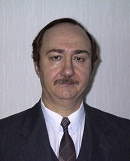
Plenary Lecture
Modeling the Stability and Stabilization Processes for Solidification Front of Liquid Metal Flowing in a Channel and the Wall’s Protection with Artificial Garnissage

Professor Ivan Kazachkov
Energy Technology Department
Royal Institute of Technology (KTH)
Sweden
&
Head of Department of Applied Mathematics and Informatics
Nizhyn State University
Ukraine
E-mail: Ivan.Kazachkov@energy.kth.se
Abstract: Intensive development of modern equipment, development of new technologies and creation of metallurgical units of high efficiency and profitability caused increase of interest of the scientists and engineers to a problem of flow control for electroconductive continua. This problem represents considerable interest in view of a wide spreading of casual oscillations of temperature, pressure, density and other characteristics of media and possibility of effective impact on the processes proceeding in them in the demanded direction. Increase of efficiency of metallurgical and electro-welding processes is often limited to overcoming need of different magnetohydrodynamic instabilities, in particular, instability of the phase transition boundaries (fronts of crystallization) of the melts and diverse liquids. For example, instability of a thin layer (film) of a solid phase of the metal called garnissage and intended for protection of walls of the metallurgical units against destruction, doesn't allow using effectively artificial garnissage known in metallurgy mostly as the negative phenomenon. Instability of a garnissage layer worsens also quality of melt owing to its pollution with material of the channel walls or crucibles of metallurgical units. Magnetohydrodynamic systems with existence of boundaries of phase transition (crystallization) are systems with the distributed parameters, which behavior in space and time is described by the partial differential equations (PDE). From the theory of automatic control of processes in continua it is known that quite often unstable linear object can't be stabilized with just programmed influence, whereas control by the principle of feedback, at which the level of operating influence is connected with perturbation of system, is more effective.The devices of automatic control by the heat fluxes intended for stabilization of the phase transition boundaries of electro-conductive liquids can be constructed, for example, on use of high-frequency electromagnetic fields. The action principle of such systems is the following: the curvature of the phase transition boundary causes change of current in the operating winding, the induced secondary current in a thin skin-layer, almost coinciding with boundary of phase transition, owing to Joule thermal emissions stabilizes a surface of the front of crystallization, etc. With a selected parameters of a control system it is possible to achieve suppression of practically any kind instability of boundaries of phase transition that opens possibility of stabilization of a garnissage and excludes possibility of metal’s contact with the channel walls.
Problems of stability and stabilization (in case of instability) boundaries of phase transition are considered accounting many factors modeling various cases of real physical conditions. It is possible to refer multiple layers of walls of channels which may contain some layers of various materials of different thickness and physical properties, influence of convection on stability of boundaries of phase transition, dependence of the proceeding processes on physical properties of melts, casual and regular perturbations of a thermo-hydrodynamic condition of the medium in and out of the considered system, etc. to such factors.
Brief Biography of the Speaker: Ivan V. Kazachkov is Mechanical Engineer who had earned his PhD (Candidate of Physical and Mathematical Sciences, 1981) and MSc (1976) from the Kyiv National T. Shevchenko University. He got Full Doctorship (1991) in Engineering Sciences from the Institute of Physics of the Latvian Academy of Sciences in Riga. He became Full Professor at the Institute of Electrodynamics of the National Ukrainian Academy of Sciences since 1989, after 1995 he has been Head of Dept and Principal Investigator at the State scienfifc and Technical Center on Nuclear and Radiation Safety of Ukraine. During 1998-2004 Ivan Kazachkov has worked at the KTH, Energy Technology Dept as Guest Professor, then during 5 years was teaching and doing research at the National Technical Univeristy of Ukraine “KPI” continuing his work part-time as Visiting Professor at KTH, teaching numerical methods and doing research in modeling of multiphase systems. Since 2008 till present time he is Affiliated Professor at the KTH. Since 2009 Prof. Kazachkov is Head of Department of Applied Mathematics and Informatics at the Nizhyn State University named after M. Gogol, during 2010-2012 was also part-time Head of Dept on Energy Saving and Heat Power at the Ukrainian Academy of Civil-Communal Economy in Kyiv. The research activities of Prof. Kazachkov include Parametric Control in Continua, Multiphase Flows, Controlled Film Flow Decay, and Granulation of Metals for Special Metallurgy, Modeling and Simulation. He has over 200 publications in scientific journals and conferences, 5 patents, 10 monographs and lecture notes. He participates in the European research programs and committees. Five PhDs have defeded their dissertation under his supervision and a number of PhD students is doing research presently under his supervision.